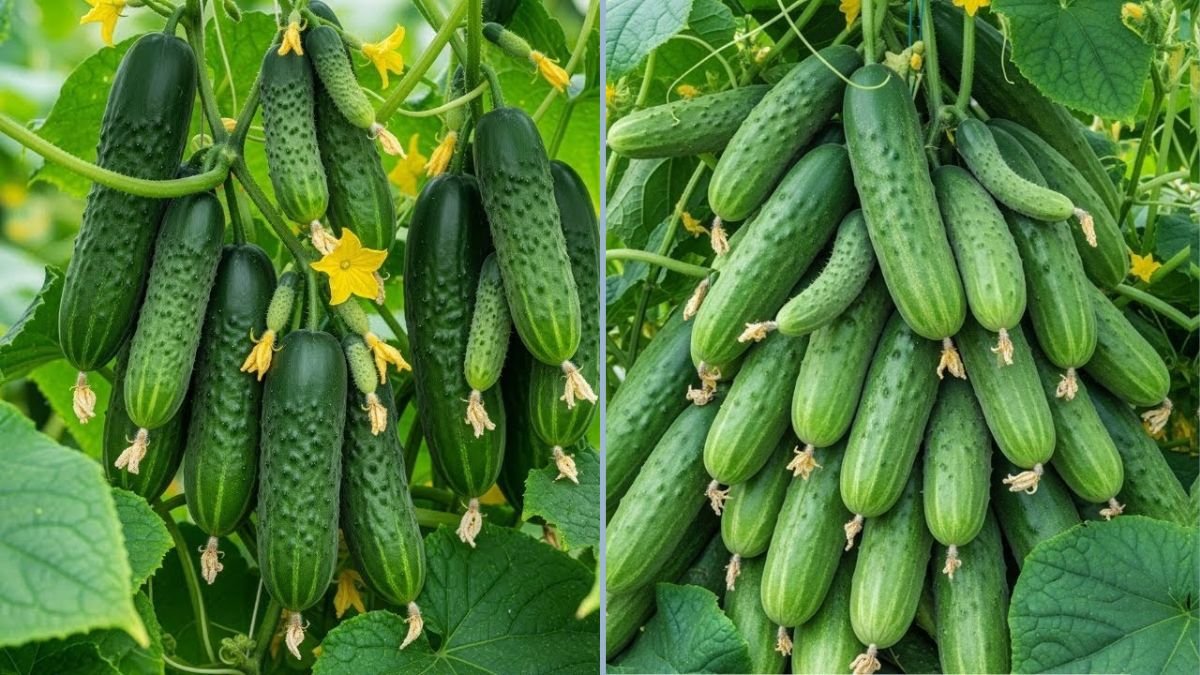Cucumbers are one of the easiest and most rewarding vegetables to grow at home. They’re refreshing, nutritious, and versatile in the kitchen, perfect for salads, pickles, or snacks straight from your garden. But did you know that a single cucumber you bought at the store can actually give you an endless supply of plants? With the right techniques, you can propagate cucumbers from seeds or cuttings, effectively growing free cucumber plants from one store-bought fruit. In this guide, we’ll show you step-by-step how to do it.
Why Grow Cucumbers at Home
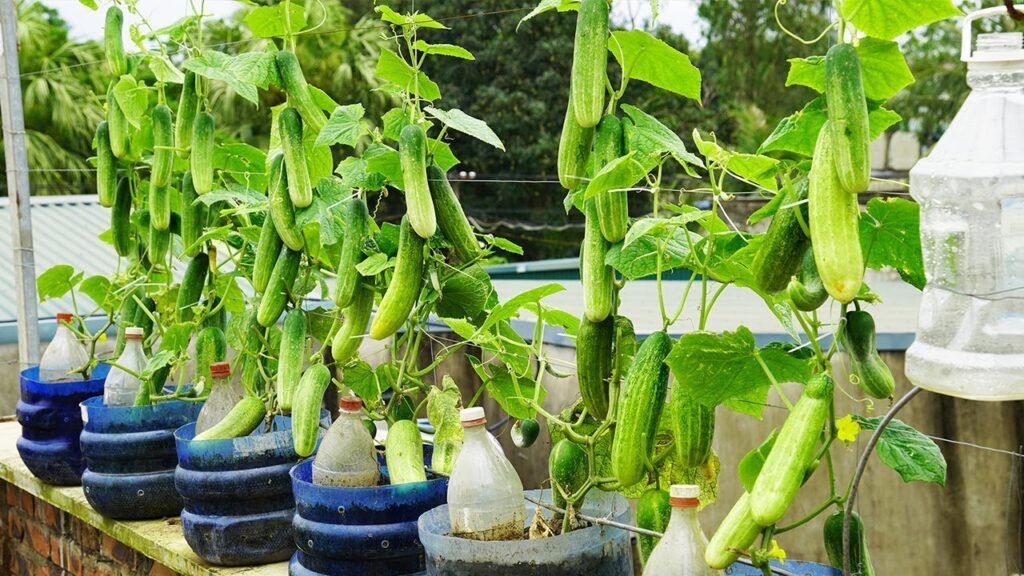
Growing cucumbers at home has many benefits:
- Freshness: Homegrown cucumbers are crisp and free from pesticides.
- Cost-effective: Instead of buying multiple plants or seeds, one cucumber can yield many plants.
- Educational and fun: Propagating vegetables from store-bought produce is a great way to teach kids about gardening.
- Sustainability: Reusing food to grow plants reduces waste and promotes a sustainable lifestyle.
With a little patience and care, you can turn a single cucumber into a small garden full of cucumbers.
Step 1: Selecting the Right Cucumber
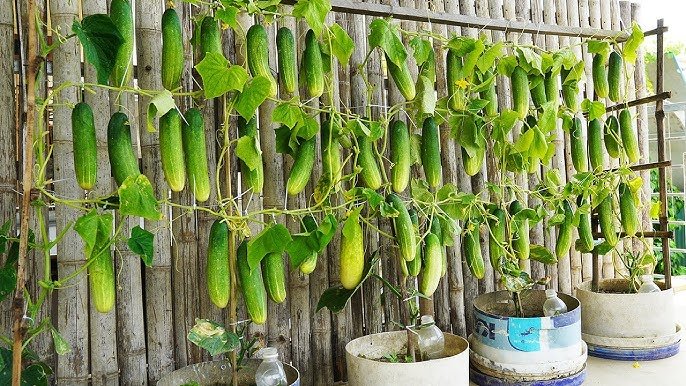
Not all cucumbers are suitable for propagation. Here’s how to choose the best one:
- Look for mature cucumbers: Choose fully ripened cucumbers that are firm and free from blemishes. Overripe or soft cucumbers may have low seed viability.
- Organic is better: If possible, choose organic cucumbers. Non-organic cucumbers may have been treated to prevent germination.
- Seeded varieties: For seed propagation, select cucumbers labeled as “heirloom” or “non-hybrid,” as hybrid seeds may not produce true-to-type plants.
Once you’ve selected the right cucumber, you can choose between two propagation methods: seed propagation or cuttings propagation.
Method 1: Growing Cucumbers from Seeds
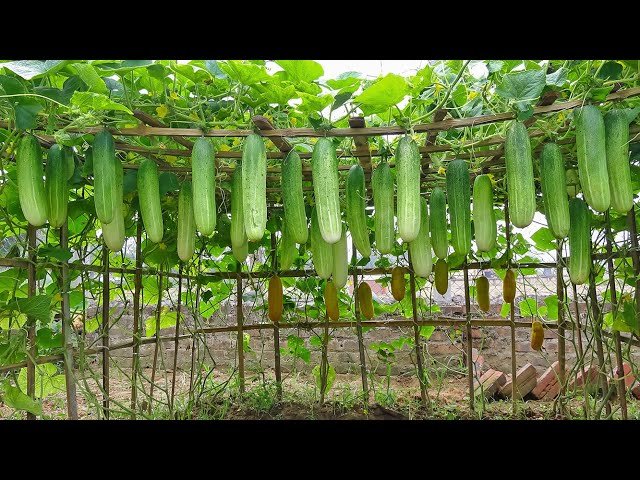
Seeds are the most common way to propagate cucumbers, and they can be easily extracted from a store-bought fruit.
Step 1: Extract Seeds
- Slice the cucumber lengthwise and scoop out the seeds with a spoon.
- Place the seeds in a bowl of water and remove any pulp.
- Allow the seeds to ferment for 1–2 days. This step helps remove the gelatinous coating around the seeds and improves germination rates.
Step 2: Dry the Seeds
After fermentation, rinse the seeds thoroughly and spread them on a paper towel to dry. Make sure they are completely dry before storing or planting to prevent mold growth.
Step 3: Prepare Seedlings
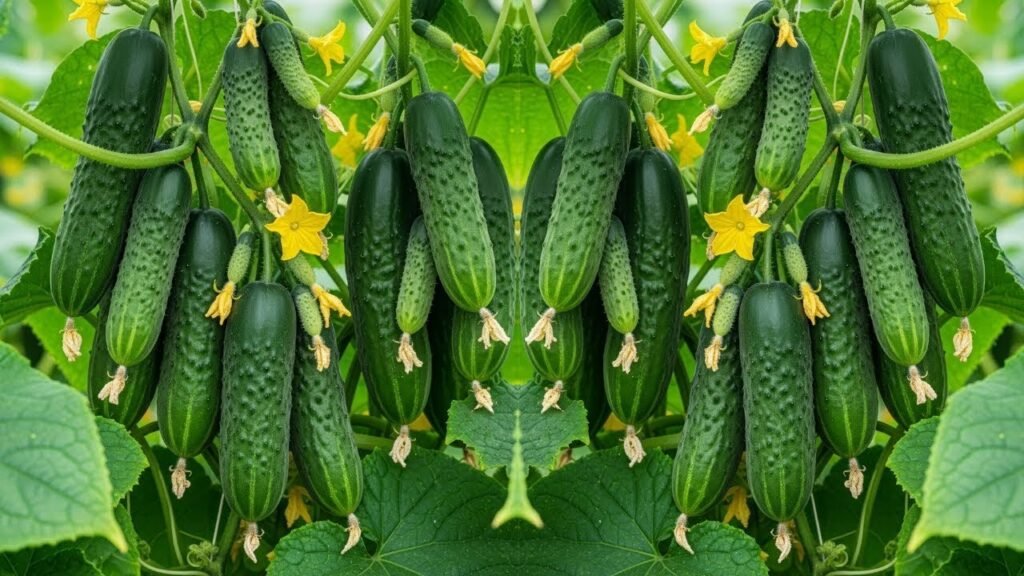
- Fill seed trays or small pots with a well-draining seed-starting mix.
- Plant seeds about 1 cm deep and cover lightly with soil.
- Water gently and keep the soil moist, but not waterlogged.
Step 4: Provide Optimal Conditions
- Light: Place seedlings in a sunny window or under grow lights for 12–16 hours a day.
- Temperature: Cucumbers germinate best at 20–30°C (68–86°F).
- Watering: Keep the soil consistently moist, but avoid soaking it.
Seeds typically germinate in 7–10 days. Once seedlings develop two sets of true leaves, they can be transplanted into larger pots or directly into the garden.
Method 2: Growing Cucumbers from Cuttings
Cucumber plants can also be propagated vegetatively using stem cuttings, which is faster than growing from seeds and ensures the new plant is identical to the parent.
Step 1: Take a Healthy Cutting
- Select a healthy vine from a cucumber plant or from a young cucumber stem.
- Cut a 10–15 cm section with at least two leaf nodes.
- Remove the lower leaves, leaving only the top 2–3 leaves intact.
Step 2: Rooting the Cutting
- Place the cutting in a container of water, ensuring that the leaf nodes are submerged.
- Keep the container in bright, indirect light.
- Change the water every 2–3 days to prevent stagnation.
Roots will begin to develop within 1–2 weeks. Once the roots are at least 5–7 cm long, the cutting can be planted in soil.
Step 3: Planting the Rooted Cutting
- Fill a pot with well-draining potting soil or a garden bed.
- Make a hole slightly larger than the root mass and plant the cutting carefully.
- Water gently and provide partial shade for the first few days to reduce transplant shock.
Step 3: Caring for Your Cucumber Plants
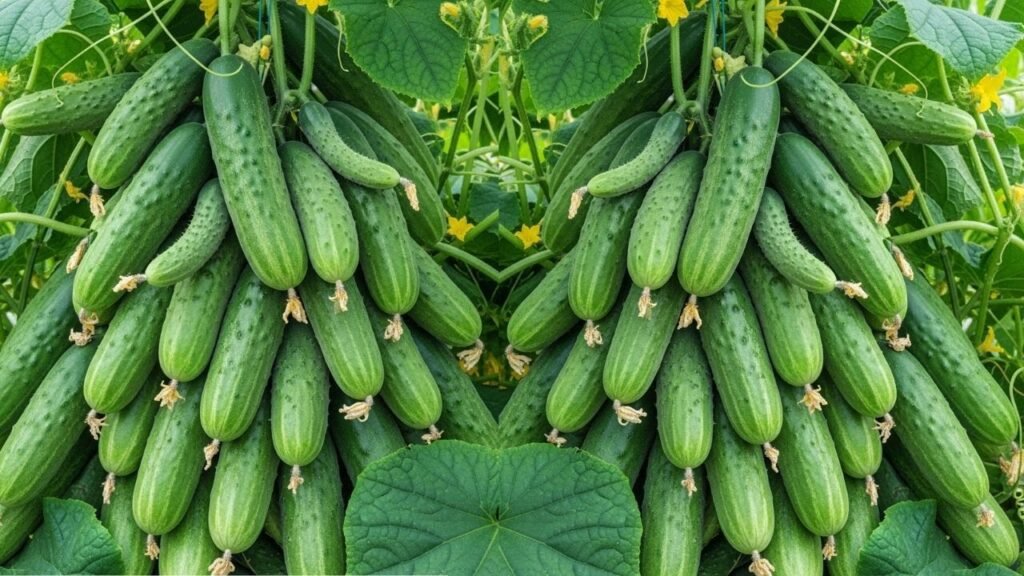
Whether grown from seeds or cuttings, cucumber plants need proper care to thrive and produce abundant fruits:
- Sunlight: Cucumbers need 6–8 hours of full sun daily.
- Soil: Use well-draining soil rich in organic matter. Cucumbers prefer a slightly acidic to neutral pH (6.0–7.0).
- Watering: Water deeply and consistently, especially during flowering and fruit development. Avoid wetting the leaves to prevent fungal diseases.
- Fertilization: Apply a balanced fertilizer every 2–3 weeks. High-nitrogen fertilizer encourages leaves, while phosphorus and potassium promote flowering and fruiting.
- Support: Provide a trellis or stake for climbing cucumber varieties. This keeps the fruit off the ground, reduces pests, and improves air circulation.
Step 4: Pollination and Fruit Development
Cucumbers produce separate male and female flowers on the same plant. For fruit production, pollination is essential.
- Natural pollinators: Bees and other insects can transfer pollen from male to female flowers.
- Hand pollination: In areas with few pollinators, use a small brush to transfer pollen from male to female flowers.
Proper pollination ensures healthy, fully developed cucumbers. Fruits typically mature 50–70 days after planting, depending on the variety.
Step 5: Harvesting Cucumbers
Cucumbers should be harvested regularly to encourage continuous fruiting:
- Check size: Harvest when fruits are firm and have reached the desired size (usually 15–25 cm, depending on the variety).
- Use scissors or a sharp knife: Cut the fruit from the vine to avoid damaging the plant.
- Regular harvesting: Frequent harvesting prevents overripe cucumbers from slowing down new fruit production.
Benefits of Propagating Cucumbers from Store-Bought Produce
- Cost-effective: One store-bought cucumber can yield dozens of plants.
- Easy for beginners: Seed extraction and cutting propagation are simple, beginner-friendly methods.
- Reduces food waste: Instead of discarding cucumbers that are too mature, you can use them to propagate new plants.
- Continuous supply: By propagating multiple cucumbers, you can have a constant harvest throughout the season.
Tips for Maximizing Your Cucumber Harvest
- Succession planting: Plant new seeds or cuttings every few weeks to ensure continuous production.
- Pest management: Watch for aphids, cucumber beetles, and powdery mildew. Use natural remedies such as neem oil or insecticidal soap.
- Mulching: Apply organic mulch to retain soil moisture and regulate temperature.
- Pruning: Remove old or diseased leaves to maintain healthy growth.
Conclusion
Growing free cucumber plants from a store-bought cucumber is an easy, cost-effective, and rewarding way to expand your garden. Whether you choose to propagate via seeds or cuttings, the process allows you to turn a single fruit into dozens of healthy plants. With proper care, sunlight, watering, and pollination, you can enjoy fresh, homegrown cucumbers throughout the season.
By embracing this method, not only will you save money, but you’ll also reduce food waste and enjoy the satisfaction of cultivating your own garden from something as simple as a cucumber you bought at the store. So grab a cucumber, extract the seeds or take a cutting, and start growing your own garden bounty today!
